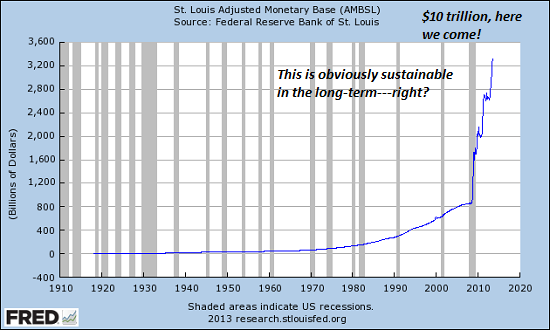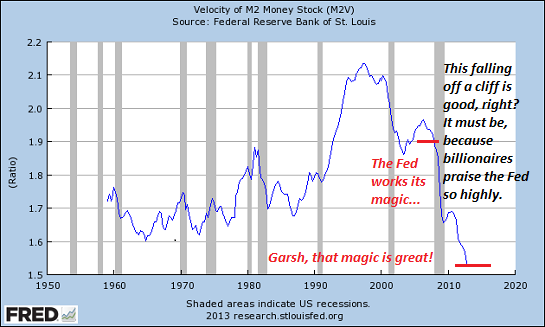By now everyone has heard of securitization: the process whereby banks take risky assets on their books, package, tranche them, and then re-sell them to yield chasing fiduciaries of widows and orphans. The conversion process can be nebulous, usually involving a 20 year-old evil French mastermind working for Goldman, and a billionaire hedge fund manager, who select the worthless securities put into the weakest tranche, just so the abovementioned two parties can short it while misrepresenting their conflicts of interest, and make a boatload of money when the whole securitized structure implodes. The process usually takes place “off balance sheet” via Special Purpose Vehicles so it is completely unregulated, and as such allows massive leverage.
According to many, the hidden leverage embedded in the securitization pipeline is what catalyzed the 2008 near-death experience of the financial markets.
All of this is well-known to most.
What however is certainly not known, because until a few days ago the concept did not technicall exist, is what emerged deep from the bowels of the FSB’s 2013 “Global Shadow Banking report“, and what is barely even defined anywhere in popular literature, which thus we have defined as the “unspoken, festering secret at the heart of shadow banking.”
Presenting self-securitization.
What is “self-securitization”? Go ahead and Google it: there doesn’t exist any technical definition of this heretofore unheard of phrase.
Rather the term, conceived by the FSB as a means of making the total size of the $71 trillion shadow banking sector somewhat more palatable, is defined as follows:
Self-securitisation (retained securitisation) is defined as those securitisation transactions done solely for the purpose of using the securities created as collateral with the central bank in order to obtain funding, with no intent to sell them to third-party investors. All of the securities issued by the Structured Finance Vehicle (SFV) for all tranches are owned by the originating bank and remain on its balance sheet.
At this point alarm bells should be going off. And if they aren’t, here is some more color.
The numbers for OFIs presented in sections 2 to 4 of this report include all financial assets of Structured Finance Vehicles (SFVs), regardless of who holds the securitised products. However, in a number of jurisdictions, some of these products are returned back onto the balance sheet of the bank that originally provided the asset to be securitised. This so called self-securitisation, or retained securitisation, is defined as those securitisation transactions done solely for the purpose of using the securities created as collateral with the central bank in order to obtain funding, with no intent to sell them to third-party investors. All of the securities issued by the SFV for all tranches are owned by the originating bank and remain on the bank’s balance sheet, so that third-party investors do not own any of the securities issued by the SFV. These assets should not be included in the shadow banking figure, as prudential consolidation rules consider them as banks’ own assets and as such subject to consolidated supervision and capital requirements.
… some of the assets that are currently ‘self-securitised’ by banks may at some point be sold to third parties when financial conditions improve.
Wait a minute: a company is “securitizing” assets…. which it then keeps, but only after it has “obtained funding with a central bank”? What?
Judging by the countries whose shadow bank institutions are the most aggressive participants in “self-securitization”, it gets clearer just what is going on here:
While Italy and Spain are clear, why is Australia on this list?
While the large increase in Australian banks’ self-securitisation of residential mortgage-backed securities (RMBS) started in 2008 (i.e. before Basel III was developed), the amount of self-securitisation is expected to stay high going forward as these securities are eligible as collateral for the Reserve Bank of Australia’s Committed Liquidity Facility (CLF). Indeed some banks are gearing up already for the CLF. Given the low level of government debt in Australia, the Australian prudential regulator has adopted elements of the Basel rules that allow banks to count a committed liquidity facility provided by the central banks as part of their Basel III liquidity requirements.
So that very strict Basel III requirements are permissive enough to allow… shadow “banks” to engage in self-securitization with their central bank? Just brilliant.
Finally, what amount of circularly (non) securitized, central-bank backstopped securities are we talking here?
Answer: $1,200,000,000,000.
That is the amount of unlevered notional that shadow (and regular) banks engage in circular check-kiting games with central banks for, and in the process obtaing “funding.” As one trading desk explained it:
you take yr worst assets… package up in an spv (which removes em from yr gaap balance sheet) then flip to central bank for cash at modest haircut and boom revenues…
And presto: magic balance sheet clean up and even more magical “revenues.”
But wait, there’s more.
Where this mindblowing, circular scheme in which riskless central banks serve as secret sources of incremental bank funding, i.e., free money, gets completely insane, is the realization that these self-securitized assets can also participate in rehypothecation chains. Recall from our exposition yesterday on the permitted leverage resulting from collateral reuse in a repo chain which is fundamentally what shadow banking is all about: unregulated, stratospheric leverage.
We added:
So… three participants result in 4x leverage; four: in roughly 6x, and so on. Of course, these are conservative estimates: in the real, collateral-strapped world, the amount of collateral reuse, and thus the number of participants is orders of magnitude higher. Which means that after just a few turns of rehypothecation, leverage approaches infinity.
Which means that should these same banks that self-securitize with Central Bank X, then proceed to re-use the same securit
y with the same counterparty – i.e., their host central bank, or the Fed of course – then this $1.2 trillion in assets, already carried off-balance sheet with Basel III’s blessings, can get 2x, 3x, 5x, 8x, 13x or more turns of leverage on them, as for the shadow bank it is the central bank that is the (up to infinity) levered counterparty. And the central bank, as everyone knows, can always just print money if and when the worthless collateral backing the bank’s self securitization ends up worthless.
The implication of this unprecedented shadow banking circle jerk, which could very easily make even the direct wealth transfer resulting from trillions in QE pale by comparison, is so stunning that we leave it up to the reader to come to their own conclusion.
![]()
via Zero Hedge http://feedproxy.google.com/~r/zerohedge/feed/~3/8Z3YYO9fUWQ/story01.htm Tyler Durden

























